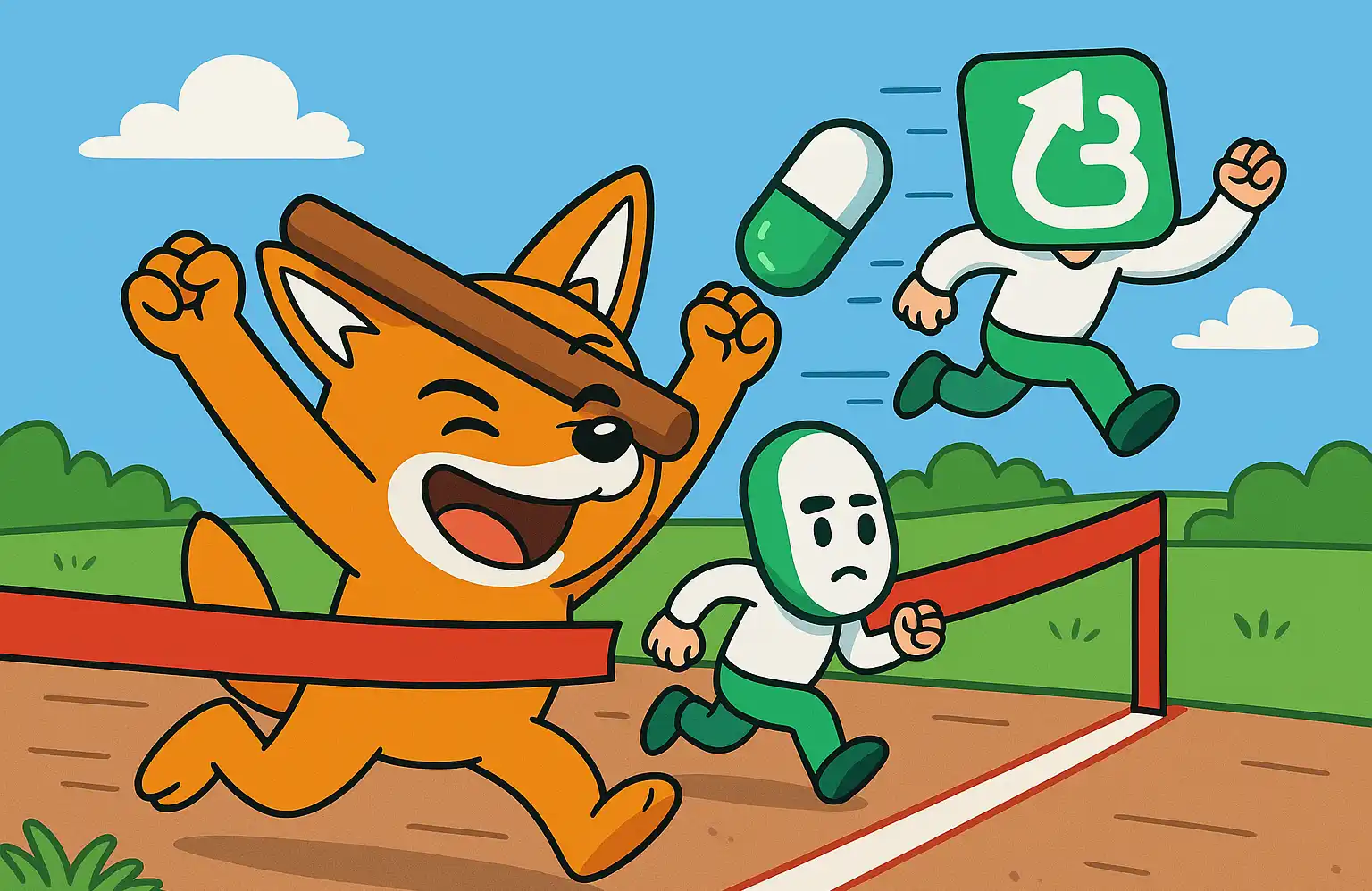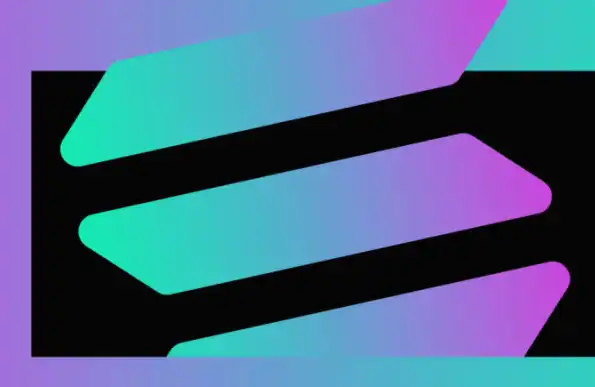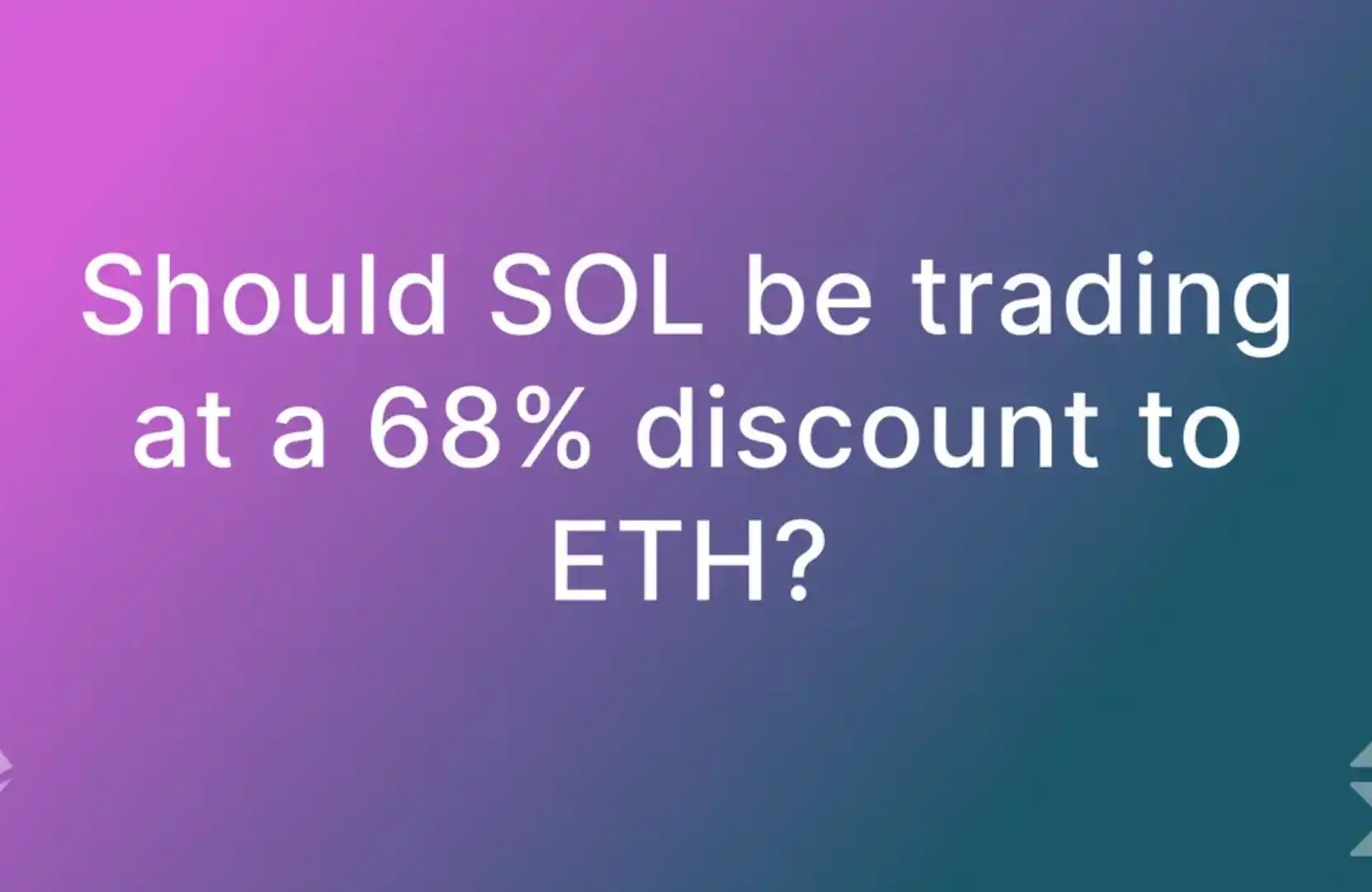Web3 Meta Universe Track Outlook (Middle) -- Discussing the current state of User Generated Content (UCG)
The Breakout of UGC -- Pain Points, Opportunities, and the most Unusual Case (VI) of the Chain Travel Circuit
Source: Melon Field Laboratory
【 Introduction 】
This post is our second in a series of recent reviews of the WEB3 universe circuit, exploring the current state and problems of the "UGC" sector and analyzing three typical UGC meta-universe projects: Riverman, GigaSpace, and Digi
The last post focused on the VR genre on the metaverse track. If the last article was about the hard framework of the metaverse, this one is about the soft power of the metaverse: UGCs, PGCS, and AIGCs related to content generation and scene building.
Don't get confused, these are not very technical words, at least more understandable than ZK (Zero Knowledge) or something. UGC is the abbreviation of user-generated Content in English, that is, user-generated content. UGC has been Generated in WEB2 games for a very long time. For example, the map editor in Heroes 3 can compile excellent and abusive maps, which is the UGC product. Roblox, which came out in 2021, is one of the best UGC games of the past few years.
PGC stands for professional-generated Content, which means that professional organizations or people produce content, such as copy modules produced by game teams themselves, or paid professional teams to make scenes in the game. I've always felt that Sandbox, a WEB3 product that claims to do UGC, should fall under the PGC's umbrella because... Sandbox is actually far too unfriendly for the average user to construct content. I've tried it twice myself, and each time I came in sincere and failed. Dare not spray Sandbox products do not do well, can only say that their level and cognition is not enough, someone is clearly PGC, you a small white user to go in to gather together what fun? hahaha
The last one is AIGC, which is the most popular type of artificial intelligence to generate content. Text planning is not needed, picture design is not needed, video production is also not needed, the rest of it is left to AI. AIGC is a revolutionary change to improve the work efficiency of game teams from quantitative to qualitative changes. Recently, we had a conversation with a big factory about the impact of AI on the game industry. The Big factory was very direct: this is the most revolutionary upgrade in a decade, and the company needs to adjust everything from work processes, to organizational structure, to personnel formation. If the adjustment is completed, it is estimated that 50% of the current staff will not be needed. AI is a topic that Guatan LABS has been working on for some time, and there will be a new long article on AI+ link gaming coming out in April. So we won't discuss the topic of AIGC in this article.
Topic 1: How to Build a Sense of Engagement
Let's just point out the first theme of this article: For younger and younger gamers, UGC experiences are much better than PGC experiences. It's those three words: "engagement." But the hardest part is balancing the game. If the difficulty is too high and the barriers are too high, players will get frustrated and swear and abandon the game. If the difficulty of participation is too low, there will be no good works, the corners of the mouth "not fun" also abandoned the tour. Yes, we gamers are so high maintenance.
Are there any examples of success in UGC games other than Roblox? Of course, take the most popular WEB2 game Egg Party as an example. It was a hit on NetEase. In March, the daily volume was 30 million, with the largest number of players among students. But that's not the point. The various levels in his home are mostly made by users themselves! That's great! Using the popular Lego splicing mode, creators can put together a fun and creative level without professional skills. Instead of sharing money with the creators, the game side directly rewards good creators, which is simple and direct.
The project users of WEB3 are much less than those of WEB2. More importantly, we should try our best to convert users into creators, increase the stickiness of users to the project, and establish a consensus of not selling NFT or token. Therefore, the project of WEB3 should be more inclined to UGC mode.
Theme 2: WEB3 is naturally suited to UGC
This brings me to the second point of this article: WEB3's blockchain feature "immutable certainty" is almost custom-made for UGC creators. Take the above Egg-Party game as an example to reward UGC creators. Why can only reward creators centrally (in the way of Party A and Party B), rather than co-construction? Because there is no consensus in WEB2 that the UGCs you create are your digital assets, and there is no way to automatically distribute them according to the contract. But this has already been done in WEB3, and NFT is the best example. A creator's UGC works in WEB3 games are digital assets, copyrighted, can be distributed, as long as the work is good, there is no fear of not making money.
So I think UGC should have done better in WEB3, and UGC creators should have been more motivated to move into WEB3 (just as all artists, be they painters, musicians, or writers, are supportive of NFT). But, alas, none has been successful so far: the Sandbox, one of the most popular in the bull market a year ago, is now only a few hundred places a day. Decentraland are even more miserable, with almost no daily activity; In Createra, the a16z investment announced at the end of November, the NFT floor price fell from 1.6E in January 2023 to 0.3E now. The previous creation campaign was also criticized for being too difficult.
What's the reason? The biggest problem with these projects is that they come under the UGC banner, but the user creation process is so slippery and the bar is so high. The user either doesn't want to continue halfway through the design, and the layout is rotten; Or design a pile of garbage with teeth, no one to play, more frustrated than Gao. It turns out that an UGC project is actually a PGC project. The key to the success of the PGC project is to make it fun, the bottom user base should be large, the loyalty should be high, the above several projects do not have such characteristics, so let's cool it first, waiting for the bull market up hype on the line.
PGCS can also be successful if they are born with private domain traffic, a group of users who come together based on an area of interest, are willing to learn about the liver for that interest, and are willing to communicate with each other. We will also give a case of Riverman later, which is a project developed from the unique perspective of "ancient Chinese architecture".
Case study
Going back to the UGC pattern discussion, now that everyone is aware of the Sandbox, etc., let's come up with a solution to solve it. From last year to this year, we have contacted a number of meta-universe project parties who are trying to do this. In summary, there are several subdivisions:
First establish a learning system suitable for the creators of this project, not just a toolbox, but a small white entry teaching, it must be easy to use.
In the process of creation, Lego splicing mode is widely recognized by users, which is both creative and simple.
Social system and achievement system based on works to strengthen the stickiness of creators and users;
If you can introduce a few mature communities or groups with private domain traffic, you can have a stable base disk.
Following the usual practice of this series, we finish the theory and pain points, and give a few examples to illustrate:
01. Riverman

Riverman is a metaverse based on Riverside Scene at Qingming Festival. It is committed to creating an interesting and Oriental metaverse platform, depicting a three-dimensional version of Riverside Scene at Qingming Festival belonging to the Web3 era.
Rivermen has a good background. Ponlaii, its parent company, completed a $4.5 million angel round of funding led by Mirana Ventures, SuperChain Capital, HashKey and others.
The most distinctive feature of this project is that the project team is hatched from the "National Architect" team, which is popular on B website and has produced a lot of voxel-style Chinese ancient architecture art. Although this kind of UGC threshold is high, but there is indeed a group of fans obsessed with Chinese ancient architecture, especially in the past few years, the story of Chinese ancient architecture masters Liang Sicheng and Lin Huiyin fire all over the network, brought some new people into the field, began to have private traffic. The biggest difference between River Man Project's UGCs and other projects' UGCs is that there are hobby-based private domain traffic users.

At the same time, during the AMA, the project also explicitly mentioned that some UGC functions will be opened in the future, and the simple plug and pull form, which is different from our real life "real estate", that is, the house and the land have a binding relationship; In the rivers and mountains, "movable property" will be realized in the future. It is precisely because the house in the river and the land in the river are two different NFT.
In terms of games that you can directly participate in right now, you can have three different assets in the game: people in the river, homes in the river, and lands in the river. River man is a character in the game, river house is a house NFT asset, and river land is a land NFT asset.
River people have their own rarity and class, and can produce in the river world, taking on the role of producing resources. River houses are houses that players can build themselves, allowing them to open shops and build factories. The river land is a scarce resource, which can be divided into inner city, outer city and suburb. There are various resource points on the river land, and each resource point has an upper limit of inventory. The resources produced will be collected as taxes and fees.

Players need to mine in the river world, the steps are: Settle - send - work - home - rest. The exploitation rate of resources is affected by the factors of land, house and people in the river. At the end of a mining cycle, users can exchange the mined resources with the authorities for copper coins in the river, and the conversion ratio fluctuates in real time according to market conditions.
Players need to place their river people according to the assets they own, such as the properties of the river house and the river land, to get more efficient mining. Players can also renovate the interior of the river house and build factories to get more resources. The three game resources can create value individually or in combination.
However, the project's economic model has not been released yet, and it is impossible to know the specific incentives for players and UGC creators from the economic model, so it seems that the project is not very popular for Web3 players who are more anxious to make money, and the influence of private traffic is only slowly but continuously growing in WEB3.
At the same time, while I don't think voxel style is wrong in itself, the reality is that the popularity of voxel is not very high. Many of our friends feel that voxel styles like Sandbox and Minecraft are not their cup of tea, and we lose some customers.
02. Giga Space
Back in September, news broke of a close collaboration between StepN and Giga Space to build a virtual StepN City, revealing the city's development schedule and goals. StepN is sure that you are very familiar with, as a Web3 national level products, I just ask, melon friends and shoes did not sell? I still have a few pairs as souvenirs anyway.
Let's briefly introduce StepN City led by Giga Space. The city will be a sports-themed space with architectural facilities such as stadiums, shopping malls and community Spaces where players can buy StepN goods, initiate community events and interact with each other. StepN City is currently under development and will be rolled out in stages following the release of GigaSpace alpha. Giga's goal is to provide a virtual space where fans from around the world can gather easily, unconstrained by geographical barriers.
The following is the aerial view of the urban design concept scheme of StepN City:

In the first launch of MOOAR, StepN's NFT platform, Giga placed third and sent out its first airdrop to NFT holders immediately after the results came out. Later, Giga also announced an official partnership with MOOAR to develop MOOAR Wonderland, a virtual space built on 12x12 SPACELAND that provides MOOAR creators with a meta-universe utility. It aims to provide virtual space, Let MOOAR creators display their NFT collections and show off their creativity to create a larger and stronger community.
MOOAR Wonderland is divided into three main scenarios, including the MOOAR Hall of Fame, the MOOAR Art Gallery, and the MOOAR Community Space. The MOOAR Hall of Fame is a landmark and hallowed temple that recognizes all MOOAR Launchpad winners, anchors them on the leaderboard and provides them with permanent dedicated space, as well as the freedom to use their creativity to build scenes for NFT collections. The MOOAR Art Gallery provides a virtual space for MOOAR Launchpad participants to display their NFT collections, refreshed quarterly. The MOOAR Community Space is an open area for MOOAR community members to gather, chat, interact and host events.
In addition to these three main scenarios, MOOAR Wonderland also offers different challenge games for users to complete and win rewards. A bigger bonus is possible if you hold the GIGI Special Edition NFT.
With StepN City and MOOAR Wonderland, it really is possible to do what StepN wanted but failed to do before: socialize. This is probably why StepN keeps giving Giga platforms.

The different sizes of Spacelands in the GigaSpace metaverse are as follows: including Standard, Large, Super large, Giant, and Giga. Although the different tiers give comparable dimensions, knowing the actual size of each SPACELAND is crucial to building effectively. The sizes range from a minimum of 20m x 20m (the size of two tennis courts) to a maximum of 572m x 572m.
Compared with other metaverse projects, the size of the plot is much smaller, which reduces the difficulty of the creator to some extent, but it should be noted that some complex PGC content may take up more land.
Long after the end of the first round of land sales, land prices are still at the offer price of 0.1E, and stabilizing the floor price in the case of metaverse collective pre-cooling also gives holders some confidence. According to the project's AMA, the land sales plan will be arranged according to the construction situation, trying to avoid too much vacant land which will cause asset prices to fall. But the current market environment is really not good, it is estimated that it will take a long time for the next round of land sales, and as more and more projects sell their own land, the scarcity of land in the meta-universe is also being questioned.
It is shown in the official LitePaper that Giga has already had 100+ partners, and Giga will provide them with PGC metaverse space construction. It can be seen that there are both Web3 companies and some Web2 companies, which may bear the heavy responsibility of some companies entering the metaverse ~

In addition to the need for PGC to build these partners, Giga continues to build its own ecosystem of UGC creators, hoping that the two will complement each other and create the flywheel effect that is the biggest feature of the Giga meta universe. For example, PGC can be used to bring some cases and templates to UGC creators, and some assets created by PGC can also be reused to UGC creators. The hope is that creators can find a lot of usable templates in the template file to create their own GigaSpace. Rather than having to create their own assets one by one.
The model of PGC+UGC is a model that we have relatively recognized. It may indeed require professionals to bring some very refined and complex content in creation, but everyone has his own imagination and ability to make some high-quality UGC content. I hope Giga can really realize this model. Let every imaginative person from the "idea" to the "meta-universe space", to achieve the real landing.
At the same time, we should know that the disadvantage of doing this is that the degree of user autonomy is limited, which is certainly not as good as the completely self-controlled metaverse space which can give full play to everyone's imagination. But in the early stages, it's more practical to walk part of the way and then run on your own.
Another thing that's different from the voxel style of other projects is that Giga uses a Unity based meta-universe. As we can see from the project's Twitter image below, this style should be more acceptable to the average user and player.

In my opinion, Giga project has two advantages. First, it has good traffic flow. It can not only apply the diversion from StepN, a Web3 national level, but also has many WEB2 and partners, which can bring continuous traffic to the project. Second, the PGC+UGC model is considered a reasonable way to reduce the difficulty of UGC while maintaining the quality of player creation.
It should be noted, however, that metaverse projects take a long time to develop, and the Sandbox is still in v0.8, not the first official release. The Giga side has yet to put out a Roadmap, which is expected to be a tangible roadmap for getting through the bulls and bears.
03. Digi

Digi is an interesting project, and more specifically, they are building UGC Metaverse, a simpler tool + content that will spell out the metaverse creation in a Lego-like way, minimizing the difficulty for creators to get started, and providing plenty of instructional videos to help creators grow.
According to the introduction of the white paper, Digi has five kinds of editors, namely Avatar Editor, Land Editor, Unit Editor, Trigger Editor and Sound Editor. Different editors are developed separately for different asset forms in the metauniverse. The advantage of doing this is that each editor can be relatively refined and specialized, of course according to the "Lego" idea of the project, the operation will be relatively easier. However, the editor is not online at present. I don't know for the time being whether the five editors will require more learning costs for the creators who just get started.
The first map Digi has made available is PGC's Penguin Island, which is currently open for pre-order testing, and because of its close relationship with the NFT Penguin project, the project has also created 3D avatars for each Penguin holder. The ability to play directly on Penguin Island is definitely a big draw for the Penguin holder. This kind of form has also been tried in Sandbox, but in Sandbox Avatar is made into the form of voxel. From the expression form, Digi's style may be accepted by more people.
The above is just an introduction to the product. At the same time, it can be found in the process of AMA that the project side has conducted thorough research on the economic model of this UGC meta-universe. The combination of Token, NFT and SBT is expected to create a real long-term project, which will not be detailed in this paper due to space limitation.
Meanwhile, in November 2022, the project officially announced the information that they had received $2.4 million in financing. Some investment institutions are shown below. Others such as self-developed DigiChain, DigiSwap features, etc. are enough to show the ambition of the project.

It should be noted that Digi is not a new project, the community has been active since the launch of the game last year, but recently the development schedule has been dragging on a bit (a common problem with metaverse projects), the community activity has been declining, and there have been some fud noises. The importance of the community in Web3 is self-evident, I hope the project side can maintain well, after all, Penguin Island will be opened soon, if the opening of the daily active data is not ideal, it will again hurt the confidence of players.
The conclusion of this article:
This post is our second in a series of recent reviews of the Web 3-dimensional universe circuit, exploring the current state and problems of the "UGC" sector and analyzing three typical UGC meta-universe projects: Riverman, GigaSpace, and Digi.
In terms of expression form, Riverman's Chinese ancient buildings have a high voxel threshold, which makes it a little difficult for ordinary users to accept. On the contrary, GigaSpace and Digi are built through Unity engine, which are easier to be accepted.
In terms of the difficulty of UGC, Riverman is more professional and uses many professional architects to create an "eastern metauniverse", which attracts a more loyal wave of fans with private traffic. GigaSpace uses PGC+UGC to improve quality while reducing UGC difficulty. It is a way to walk a bit and then run yourself again. Digi has developed a "tool + Lego" UGC that every player can create. Each of the three projects has its own merits.
In terms of project schedule, there are old projects and new projects, but without exception, the development time is not short, and the actual UGC functionality is not fully live. We know that the metaverse project does need a long development time, but we hope that the project side can grasp the operation rhythm and lasting operation.
To be continued, stay tuned!
Original link
Welcome to join the official BlockBeats community:
Telegram Subscription Group: https://t.me/theblockbeats
Telegram Discussion Group: https://t.me/BlockBeats_App
Official Twitter Account: https://twitter.com/BlockBeatsAsia
 Forum
Forum OPRR
OPRR Finance
Finance
 Specials
Specials
 On-chain Eco
On-chain Eco
 Entry
Entry
 Podcasts
Podcasts
 Data
Data


 Summarized by AI
Summarized by AI







